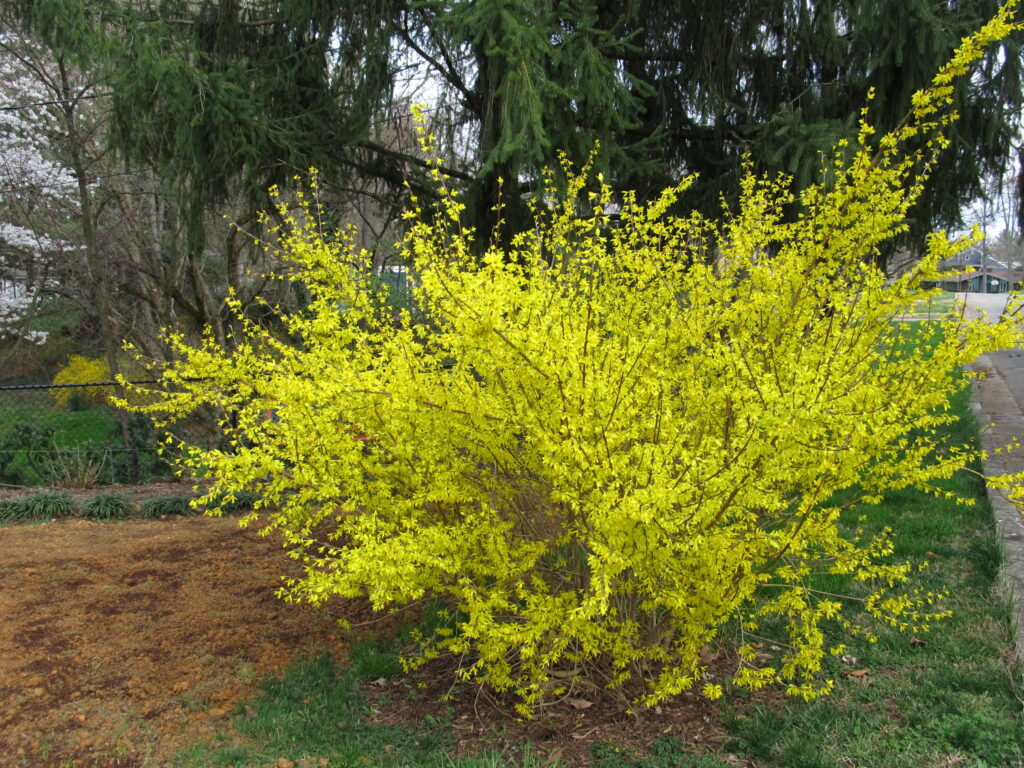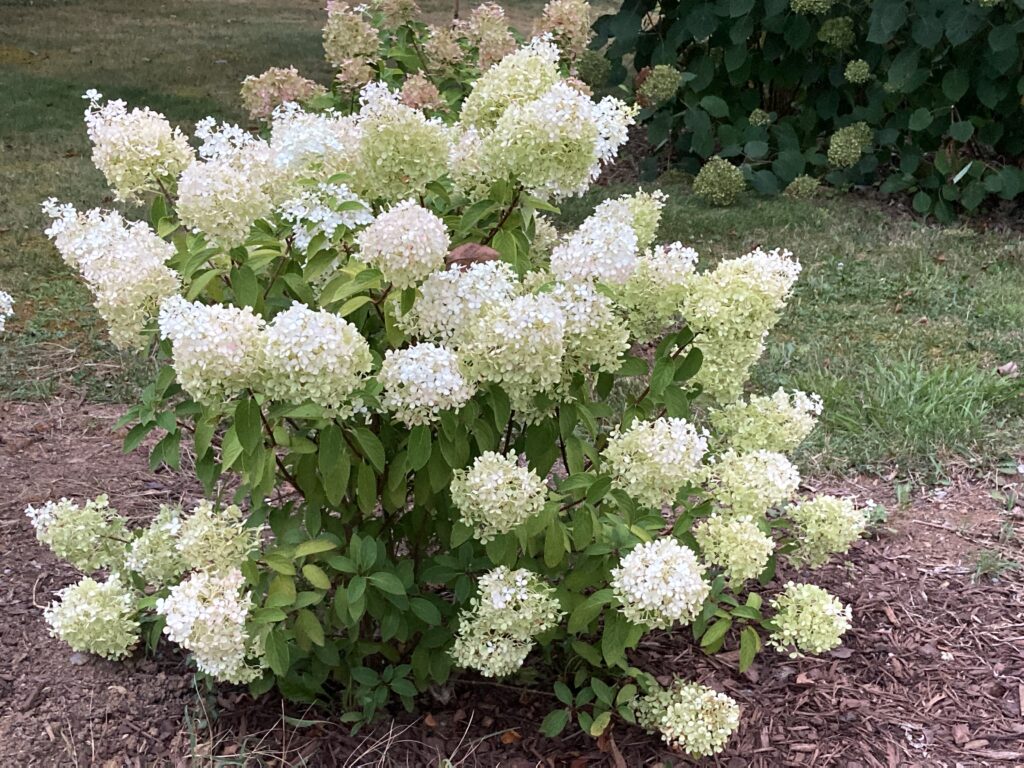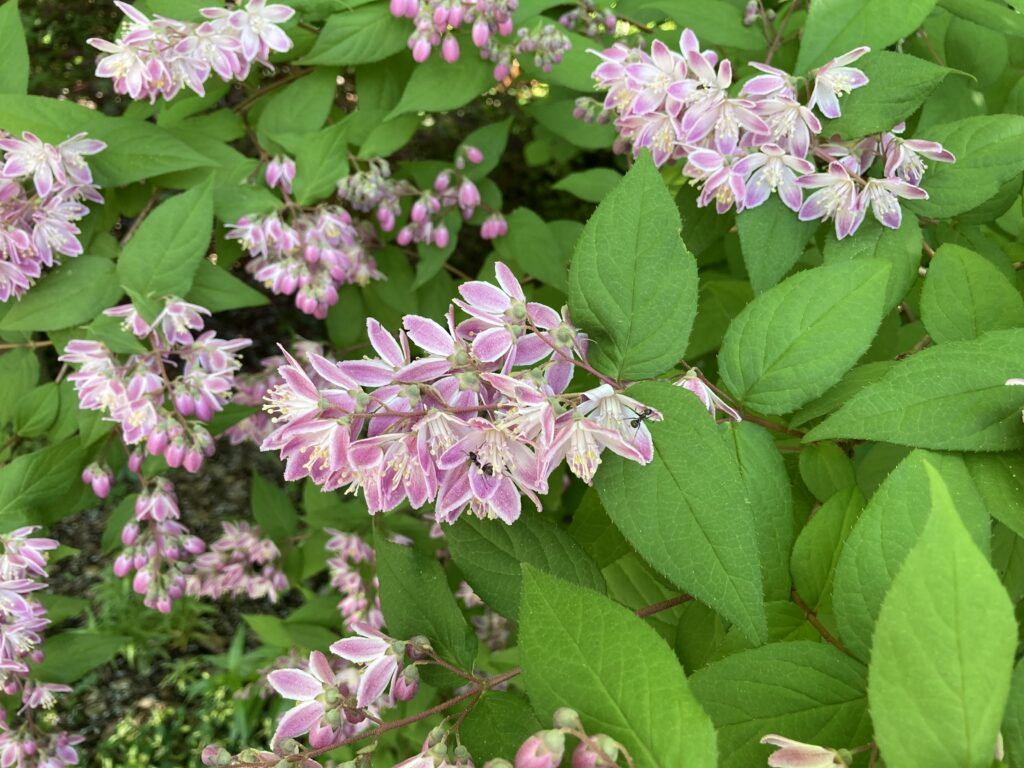
The late winter / early spring period are ideal times for pruning many (not all) flowering shrubs. At this time, shrubs are leafless, and you are better able to see the overall shape of the shrub and easily identify dead, damaged, diseased wood, and structural defects. Pruning also stimulates new growth.
Spring flowering shrubs (those that bloom before mid-June) should be pruned after flowering. Their flower buds on “old wood” or the previous growing season. Early spring flowering shrubs include quince, evergreen azalea, forsythia, Japanese kerria, lilac, and weigela. The list includes with May blooming rhododendrons and fall and spring flowering camellias.
Summer blooming shrubs such as summerweet (Clethra alnifolia), panicle hydrangea (Hydrangea paniculata), and blue mist shrub (Caryopteris x clandonensis) are pruned in late winter/early spring. Their flower buds form on new wood produced during the current season. Native deciduous azaleas like plumleaf (R. prunifolium)and sweet (R. arborescens) azaleas are best pruned within one month after flowering.

Popular hedging favorites such as boxwoods (Buxus spp.), hollies (Ilex spp.), privets (Ligustrum spp.), barberries (Berberis spp.), and others are pruned 1-3 times during the growing season. In most areas all hedging should cease by mid-September. Do not shear hedges to the same height as this will destroy formation of new growth buds.
For old or overgrown shrubs that bloom poorly and are still healthy growth-wise, try rejuvenation pruning in early spring. Cut all stems back to the ground. Shrubs usually grow back quickly after fertilizing and flowering resumes in 1-2 years. Plants that respond well to rejuvenation include crape myrtle, forsythia, lilac, and spirea.
To finish fall is not a desirable pruning time as new pruning cuts at that time of year is subject to winter injury.
Pruning timetable for many flowering shrubs:
- Spring Flowering Shrubs (Prune After Flowering)
Serviceberry shadbush (Amelanchier spp.)
Azaleas (Rhododendron spp.)
Barberry (Berberis spp.)
Beautyberry (Callicarpa spp.)
Sweetshrub (Calycanthus floridus)
Camellia (Camellia x)
Flowering quince (Chaenomeles spp.)
Dogwood (Cornus spp.)
Cotoneaster (Cotoneaster spp.)
Daphne (Daphne spp.)
Deutzia (Deutzia spp.)
Forsythia (Forsythia spp.)
Fothergilla (Fothergilla spp.)
Witchhazel (Hamamelis spp.)
Smooth Hydrangea (Hydrangea arborescens)
Oakleaf Hydrangea (Hydrangea quercifolia)
Mountain laurel (Kalmia latifolia)
Kerria (Kerria japonica)
Golden chain (Laburnum anagyroides)
Privet (Ligustrum spp.)
Spicebush (Lindera benzoin)
Honeysuckle (Lonicera spp.)
Chinese Fringe Flower (Loropetalum chinensis)
Mockorange (Philadelphus coronarius)
Ninebark (Physocarpus orbiculatus)
Japanese Pieris (Pieris japonicus)
Firethorn (Pyracantha spp.)
Currant or gooseberry (Ribes sanguinea)
Roses (Rosa spp.)
Rhododendrons (Rhododendron spp.)
Spiraea (Spirea spp.)
Lilac (Syringa spp.)
Viburnums (Viburnum spp.)
Weigela (Weigela florida)

- Summer Flowering Shrubs (Prune in Spring)
Flowering abelia (Abelia x grandifolia)
Butterfly bush (Buddleia x spp.)
Beautyberry (Callicarpa spp.)
Blue Mist (Caryopteris × clandonensis)
New Jersey Tea (Ceanothus americanus)
Summersweet (Clethra alnifolia)
Rose of Sharon (Hibiscus syriacus)
Bigleaf hydrangea (Hydrangea macrophylla)
Panicle hydrangea (Hydrangea paniculata)
St John’s Wort (Hypericum spp.)
Crape myrtle (Lagerstroemia spp.)
Cinquefoil (Potentilla fruticosa)
Sweet azalea (Rhododendron arborescens)
Plumleaf azalea (Rhododendron prunifolium)
Sumac (Rhus spp.)
Roses (Rosa spp.)
Anthony Waterer spirea (Spiraea x bumalda)
Chaste tree (Vitex agnus-castus)

 Posted in
Posted in 
